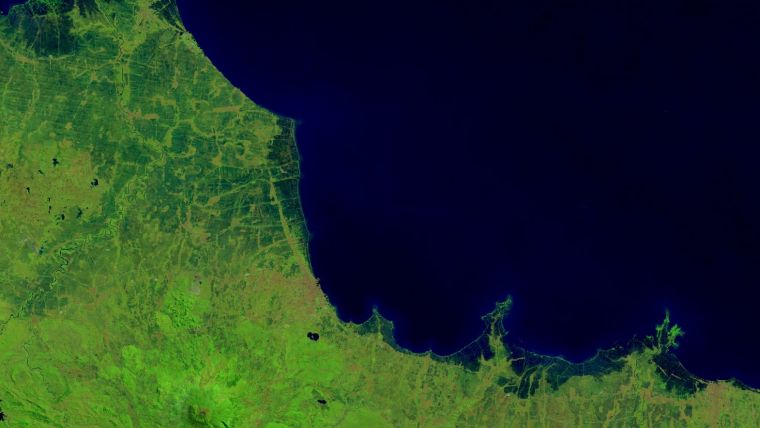People Living On Deltas Are Increasingly Vulnerable to Sea-level Rise
Researchers from Utrecht University in the Netherlands, Woods Hole Oceanographic Institution (WHOI) in the US, and colleagues found that delta areas worldwide have actually gained land in the past 30 years, despite river damming. However, recent land gains are unlikely to last throughout the 21st century due to expected, accelerated sea-level rise. The researchers published their findings in the journal Nature.
Economically and Ecologically Valuable
River deltas rank among the most economically and ecologically valuable environments on Earth. People living on deltas are increasingly vulnerable to sea-level rise and coastal hazards such as major storms, extremely high tides, and tsunamis. Many deltas experience a decline in sediment supply due to upstream damming, making them even more vulnerable. However, the new study found that long-term, large-scale, upstream deforestation has resulted in soil erosion that increased the amount of sediment transported to many deltas.
Upstream Deforestation
“A large driver for these gains turned out to be human action,” says lead author Jaap Nienhuis, a geoscientist at Utrecht University and a graduate of the MIT-WHOI Joint Program. “Twenty-five per cent of delta growth can be attributed to upstream deforestation, which results in soil erosion and increased sediment delivery to the coast. Human activities such as damming causes sediment starvation and the increased importance of wave- and tide-driven transport, which can also change delta shape.”
Forces of Waves and Tides
The relationship between the sediment deposited by rivers, oceanographic forces of waves and tides, and delta shape has remained poorly understood. To address this, the international team of researchers developed and applied a novel theory that can quantify how waves and tides influence delta shape. The availability of global satellite imagery allowed them to test their new model on over 10,000 deltas worldwide, ranging from small to mega-deltas.
Prediction of Delta Shape
“Applying this novel prediction of delta shape to global examples allowed us to quantify how delta shape affects change,” says WHOI geologist Andrew Ashton, a coauthor of the paper. "For example, when sediment supply diminishes, deltas dominated by waves tend to erode, while tide-dominated deltas continue to grow."
The next step in the research is to extend the model to make predictions of future delta change, particularly for rising sea levels. Understanding how waves and tides modify river deltas will be critical for anticipating future change, both locally and globally.
The research team also included colleagues from Florida State University, Wageningen University (The Netherlands) and Research, Tulane University, Indiana University, University of Colorado Boulder Institute of Arctic and Alpine Research, and Los Alamos National Laboratory. The work was funded by the National Science Foundation (US) and the Netherlands Science Organization NWO.
Caption: Deltas along the north shore of Java, Indonesia, which have expanded in recent years following large-scale deforestation in the drainage basins. (Image courtesy of NASA/Landsat 2020).

Value staying current with hydrography?
Stay on the map with our expertly curated newsletters.
We provide educational insights, industry updates, and inspiring stories from the world of hydrography to help you learn, grow, and navigate your field with confidence. Don't miss out - subscribe today and ensure you're always informed, educated, and inspired by the latest in hydrographic technology and research.
Choose your newsletter(s)
























